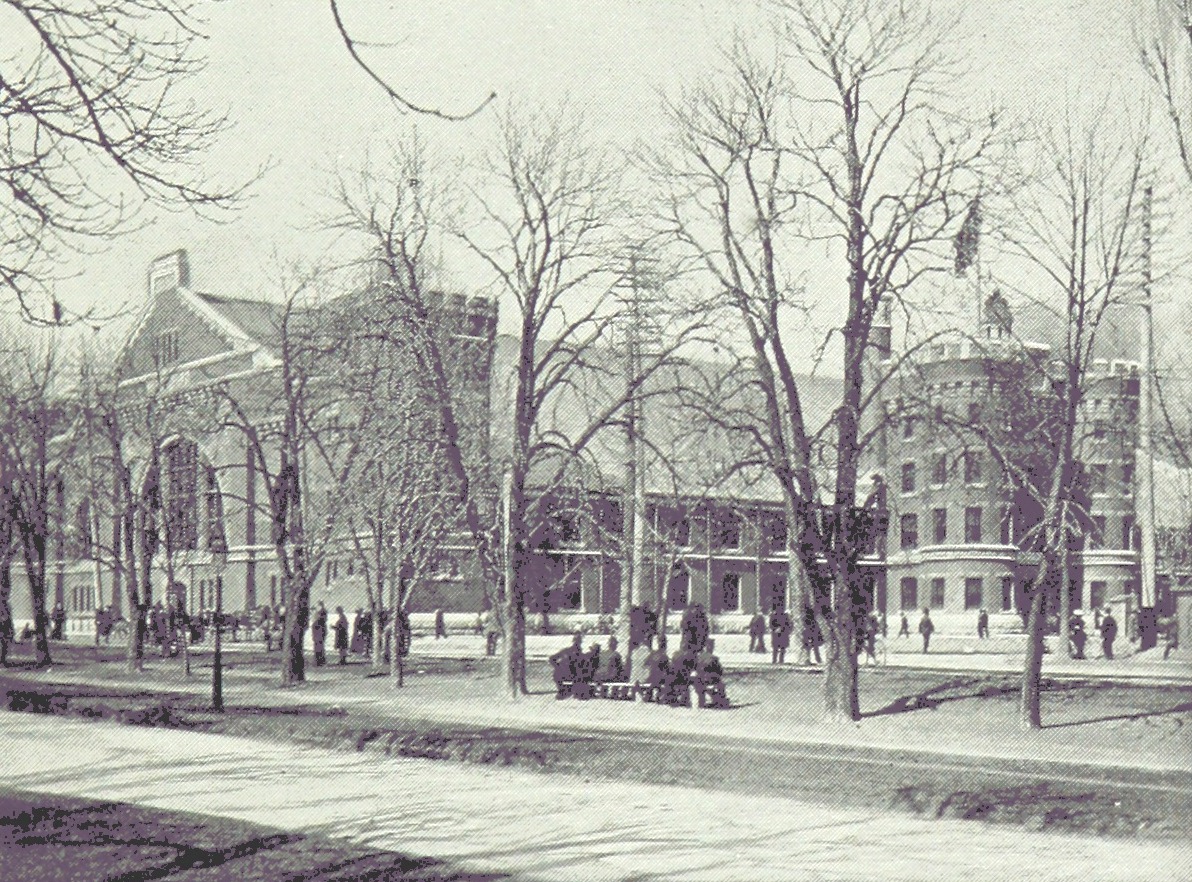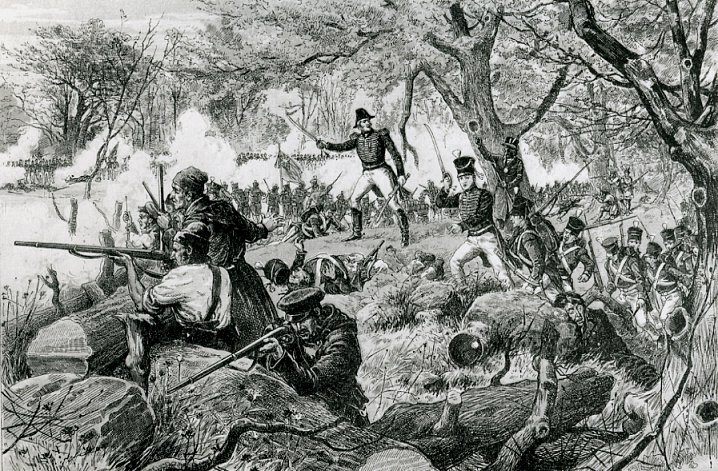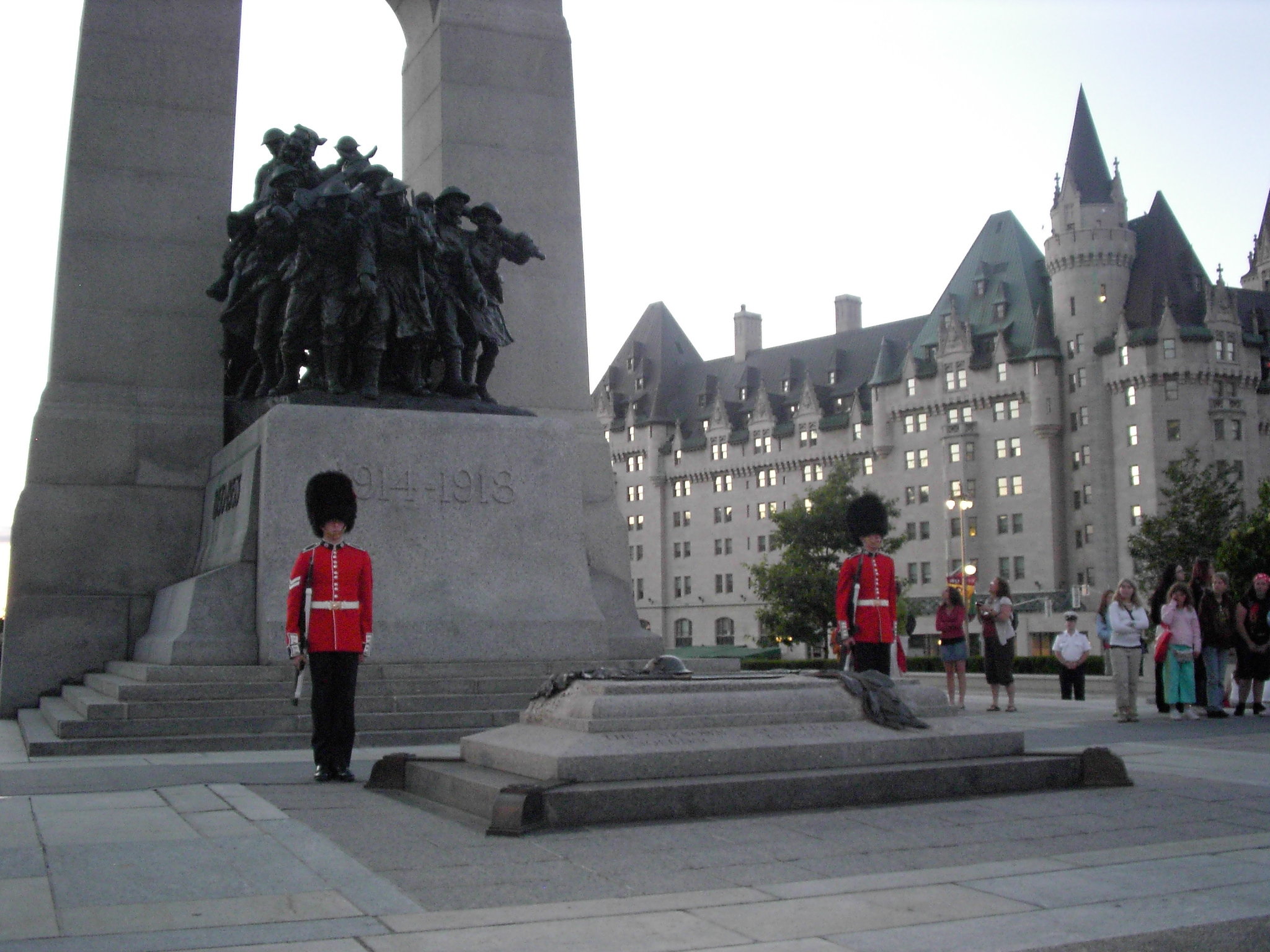|
1st Halifax Regiment, Canadian Artillery
The 1st (Halifax-Dartmouth) Field Artillery Regiment, RCA, is a Canadian Army reserve artillery regiment. It is located in Halifax, Nova Scotia, at 73 Hobson Lake Drive. The unit consists of two batteries, 51st and 84th Field Batteries (87th Field Battery existing only on paper since the late 1990s). There are two units located within 1st (Halifax-Dartmouth) Field Artillery Regiment. One is in Halifax and the other is the 84th Independent Field Battery located in Yarmouth NS. Both share the same Commanding Officer. History Pre and Postconfederation The regiment traces its lineage back to the Halifax Volunteer Artillery, which may have been in existence as early as 1776. The unit was officially recognized in 1791 and served into the mid-19th century, when it underwent a series of name changes. In 1885, the unit, then known as the 1st "Halifax" Brigade of Garrison Artillery, sent two batteries with the Halifax Provisional Battalion to participate in the suppression of North-W ... [...More Info...] [...Related Items...] OR: [Wikipedia] [Google] [Baidu] |
Primary Reserve
The Primary Reserve of the Canadian Armed Forces (french: links=no, Première réserve des Forces canadiennes) is the first and largest of the four sub-components of the Canadian Armed Forces reserves, followed by the Supplementary Reserve, the Cadet Organizations Administration and Training Service (formerly the Cadet Instructors Cadre) and the Canadian Rangers. The reserve force is represented, though not commanded, at the national level by the chief of reserves and employer support. This is usually a major-general or rear-admiral. The Primary Reserve consists of sailors, soldiers, and aviators who may augment or operate alongside their Regular Force counterparts. Each reserve force is operationally and administratively responsible to its corresponding environmental command; those being the Royal Canadian Navy, the Canadian Army and the Royal Canadian Air Force. Primary reservists number approximately 27,000 (all ranks, all services). The reserves are important to sustaining ... [...More Info...] [...Related Items...] OR: [Wikipedia] [Google] [Baidu] |
Eastern Passage, Nova Scotia
Eastern Passage is an unincorporated suburban community in Halifax Regional Municipality Nova Scotia, Canada. Eastern Passage has historically been tied to the fishing industry. Its waterfront has several small wharves and piers. The construction of CFB Shearwater, a military air base, at the northern boundary of the community during World War I, and the construction of the Imperial Oil (later Esso), Texaco (later Ultramar) oil refineries, the Volvo Halifax Assembly plant and automobile import/export facility following World War II redefined the local economy. New highway connections have resulted in the majority of area residents commuting to Downtown Halifax or Dartmouth. History Prior to the European settlers, Eastern Passage was a season home to the Mi'kmaq for thousands of years. Europeans began seasonal use of the channel starting about 1712 while the Mi'kmaq shifted to McNab's island. The Eastern Passage area was granted to ranger Joseph Gorham, but he did not settl ... [...More Info...] [...Related Items...] OR: [Wikipedia] [Google] [Baidu] |
1st (Halifax-Dartmouth) Field Artillery Regiment, RCA
The 1st (Halifax-Dartmouth) Field Artillery Regiment, RCA, is a Canadian Army reserve artillery regiment. It is located in Halifax, Nova Scotia, at 73 Hobson Lake Drive. The unit consists of two batteries, 51st and 84th Field Batteries (87th Field Battery existing only on paper since the late 1990s). There are two units located within 1st (Halifax-Dartmouth) Field Artillery Regiment. One is in Halifax and the other is the 84th Independent Field Battery located in Yarmouth NS. Both share the same Commanding Officer. History Pre and Postconfederation The regiment traces its lineage back to the Halifax Volunteer Artillery, which may have been in existence as early as 1776. The unit was officially recognized in 1791 and served into the mid-19th century, when it underwent a series of name changes. In 1885, the unit, then known as the 1st "Halifax" Brigade of Garrison Artillery, sent two batteries with the Halifax Provisional Battalion to participate in the suppression of North- ... [...More Info...] [...Related Items...] OR: [Wikipedia] [Google] [Baidu] |
5e Régiment D'artillerie Légère Du Canada
The Royal Canadian Horse Artillery is the name given to the regular field artillery units of the Canadian Army. Organization The Regular Force has three RCHA regiments: ; 1st Regiment, Royal Canadian Horse Artillery: this is the descendant of the original batteries of artillery formed in 1871, and is thus the senior Regular unit in the Canadian army. 1 RCHA was forward deployed in Germany as part of Canadian Forces Europe for 25 years between 1967, and the final Canadian withdrawal from Europe in 1993. Currently, this regiment is part of 3rd Canadian Division's 1 Canadian Mechanized Brigade Group. ; 2nd Regiment, Royal Canadian Horse Artillery: 2 RCHA was formed in 1950 for service in the Korean War. 2 RCHA is part of 4th Canadian Division's 2 Canadian Mechanized Brigade Group and is located in Garrison Petawawa. It is composed of two Gun Batteries (D and E), one Surveillance and Target Acquisition Battery (F), a Forward Observation Battery (Y), and its Headquarters Battery ... [...More Info...] [...Related Items...] OR: [Wikipedia] [Google] [Baidu] |
The Princess Louise Fusiliers
The Princess Louise Fusiliers is a Primary Reserve light infantry regiment of the Canadian Armed Forces. Lineage File:Regimental Colour of the Princess Louise Fusiliers.jpg, Regimental Colour of the Princess Louise Fusiliers File:Camp_Flag_of_the_Princess_Louise_Fusiliers.jpg, Camp Flag of the Princess Louise Fusiliers The Princess Louise Fusiliers * Originated on 18 June 1869, in Halifax, Nova Scotia, as The Halifax Volunteer Battalion of Infantry. * Redesignated on 5 November 1869, as the 66th The Halifax Volunteer Battalion of Infantry. * Redesignated on 14 November 1879, as the 66th Battalion (Princess Louise Fusiliers). * Redesignated on 8 May 1900, as the 66th Regiment (Princess Louise Fusiliers). * Redesignated on 15 May 1920, as The Princess Louise Fusiliers. * Amalgamated on 1 December 1936, with the Headquarters and A Company' of the 6th Machine Gun Battalion, CMGC and Redesignated as The Princess Louise Fusiliers (Machine Gun). * Redesignated on 1 January 194 ... [...More Info...] [...Related Items...] OR: [Wikipedia] [Google] [Baidu] |
1st Field Artillery Regiment, Royal Canadian Artillery
The 1st (Halifax-Dartmouth) Field Artillery Regiment, RCA, is a Canadian Army reserve artillery regiment. It is located in Halifax, Nova Scotia, at 73 Hobson Lake Drive. The unit consists of two batteries, 51st and 84th Field Batteries (87th Field Battery existing only on paper since the late 1990s). There are two units located within 1st (Halifax-Dartmouth) Field Artillery Regiment. One is in Halifax and the other is the 84th Independent Field Battery located in Yarmouth NS. Both share the same Commanding Officer. History Pre and Postconfederation The regiment traces its lineage back to the Halifax Volunteer Artillery, which may have been in existence as early as 1776. The unit was officially recognized in 1791 and served into the mid-19th century, when it underwent a series of name changes. In 1885, the unit, then known as the 1st "Halifax" Brigade of Garrison Artillery, sent two batteries with the Halifax Provisional Battalion to participate in the suppression of N ... [...More Info...] [...Related Items...] OR: [Wikipedia] [Google] [Baidu] |
Halifax Regional Municipality
Halifax is the capital and largest municipality of the Provinces and territories of Canada, Canadian province of Nova Scotia, and the largest municipality in Atlantic Canada. As of the 2021 Census, the municipal population was 439,819, with 348,634 people in its urban area. The regional municipality consists of four former municipalities that were Amalgamation (politics), amalgamated in 1996: History of Halifax (former city), Halifax, Dartmouth, Nova Scotia, Dartmouth, Bedford, Nova Scotia, Bedford, and Halifax County, Nova Scotia, Halifax County. Halifax is a major economic centre in Atlantic Canada, with a large concentration of government services and private sector companies. Major employers and economic generators include the Canadian Armed Forces, Department of National Defence, Dalhousie University, Nova Scotia Health Authority, Saint Mary's University (Halifax), Saint Mary's University, the Halifax Shipyard, various levels of government, and the Port of Halifax. Agricult ... [...More Info...] [...Related Items...] OR: [Wikipedia] [Google] [Baidu] |
Basic Military Qualification
Basic Military Qualification (BMQ) refers to both the basic training course, and the graduation qualification, received by non-commissioned recruits or reservists seeking entry to the Canadian Forces. The course is 10 weeks in length and conducted at Canadian Forces Leadership and Recruit School in Saint-Jean, Quebec for Regular Force recruits. For reservists the course is condensed to two months during the summer, or over the weekends (typically 9 to 12 weekends) during fall and winter and conducted at any military installation with the necessary resources. In the training regime of the Canadian Forces, BMQ falls within Developmental Period 1 (DP1), which focuses on the skills and knowledge required for entry level employment and further training. In addition to BMQ, DP1 includes environmental and occupational qualifications, and second language training as required. After completing DP1, Non-Commissioned Members (NCMs) are deemed occupationally employable at an introductory leve ... [...More Info...] [...Related Items...] OR: [Wikipedia] [Google] [Baidu] |
Halifax Armoury
The Halifax Armoury is a military structure in central Halifax, Nova Scotia, Canada. The armoury is the home base of The Princess Louise Fusiliers, and several cadet units. Architecture The armoury was designed in 1895 by Chief Dominion Architect Thomas Fuller, and was opened the next year and work on the structure was completed in 1899. While the sandstone exterior is based on a medieval castle, it was actually one of the most advanced structures of its day. It was pioneering in its use of a series of Fink trusses to create a large interior space with no columns or walls, and is today the oldest surviving example of such a building. It was also one of the first buildings in Halifax to be lit by electricity. The plan is similar to that of Fuller's Toronto Armoury, completed in 1894. History It has played an important part in many Canadian wars, being an important transit point for soldiers before departing by ship for the Boer War and both World Wars. It was damaged in the Hal ... [...More Info...] [...Related Items...] OR: [Wikipedia] [Google] [Baidu] |
Canadian Forces
} The Canadian Armed Forces (CAF; french: Forces armées canadiennes, ''FAC'') are the unified military forces of Canada, including sea, land, and air elements referred to as the Royal Canadian Navy, Canadian Army, and Royal Canadian Air Force. Personnel may belong to either the Regular Force or the Reserve Force, which has four sub-components: the Primary Reserve, Supplementary Reserve, Cadet Organizations Administration and Training Service, and the Canadian Rangers. Under the '' National Defence Act'', the Canadian Armed Forces are an entity separate and distinct from the Department of National Defence (the federal government department responsible for administration and formation of defence policy), which also exists as the civilian support system for the Forces. The Canadian Armed Forces are a professional volunteer force that consists of approximately 68,000 active personnel and 27,000 reserve personnel, increasing to 71,500 and 30,000 respectively under "Strong, Secure ... [...More Info...] [...Related Items...] OR: [Wikipedia] [Google] [Baidu] |
History Of The Canadian Army
The history of the Canadian Army, began when the title first came into official use in November 1940, during the Second World War, and is still used today. Although the official titles, Force Mobile Command, and later Land Force Command, were used from February 1968 to August 2011, "Canadian Army" continued to be unofficially used to refer to the ground forces of the Canadian Armed Forces, much as it has been from Confederation in 1867 to the present. The term was often even used in official military publications, for example in recruiting literature and the official newspaper of the Canadian Forces, ''The Maple Leaf''. On August 16, 2011, the title, "Canadian Army", was officially restored, once again bringing the official designation in line with common and historical usage. Formation Prior to Canadian Confederation in 1867, defence for the colonies that comprise present-day Canada was dependent on the armies of colonial powers. The military of New France (1608–1763) was depen ... [...More Info...] [...Related Items...] OR: [Wikipedia] [Google] [Baidu] |
Military History Of Canada
The military history of Canada comprises hundreds of years of armed actions in the territory encompassing modern Canada, and interventions by the Canadian Forces, Canadian military in conflicts and peacekeeping worldwide. For thousands of years, the area that would become Canada was the site of sporadic intertribal conflicts among Aboriginal peoples in Canada, Aboriginal peoples. Beginning in the 17th and 18th centuries, Canada was the site of French and Indian Wars, four colonial wars and two additional wars in Nova Scotia and Acadia between New France and New England; the conflicts spanned almost seventy years, as each allied with various First Nation groups. In 1763, after the final colonial war—the Seven Years' War—the British emerged victorious and the French civilians, whom the British hoped to assimilate, were declared "British Subjects". After the passing of the Quebec Act in 1774, giving the Canadians, Canadians their first charter of rights under the new regime, the B ... [...More Info...] [...Related Items...] OR: [Wikipedia] [Google] [Baidu] |




